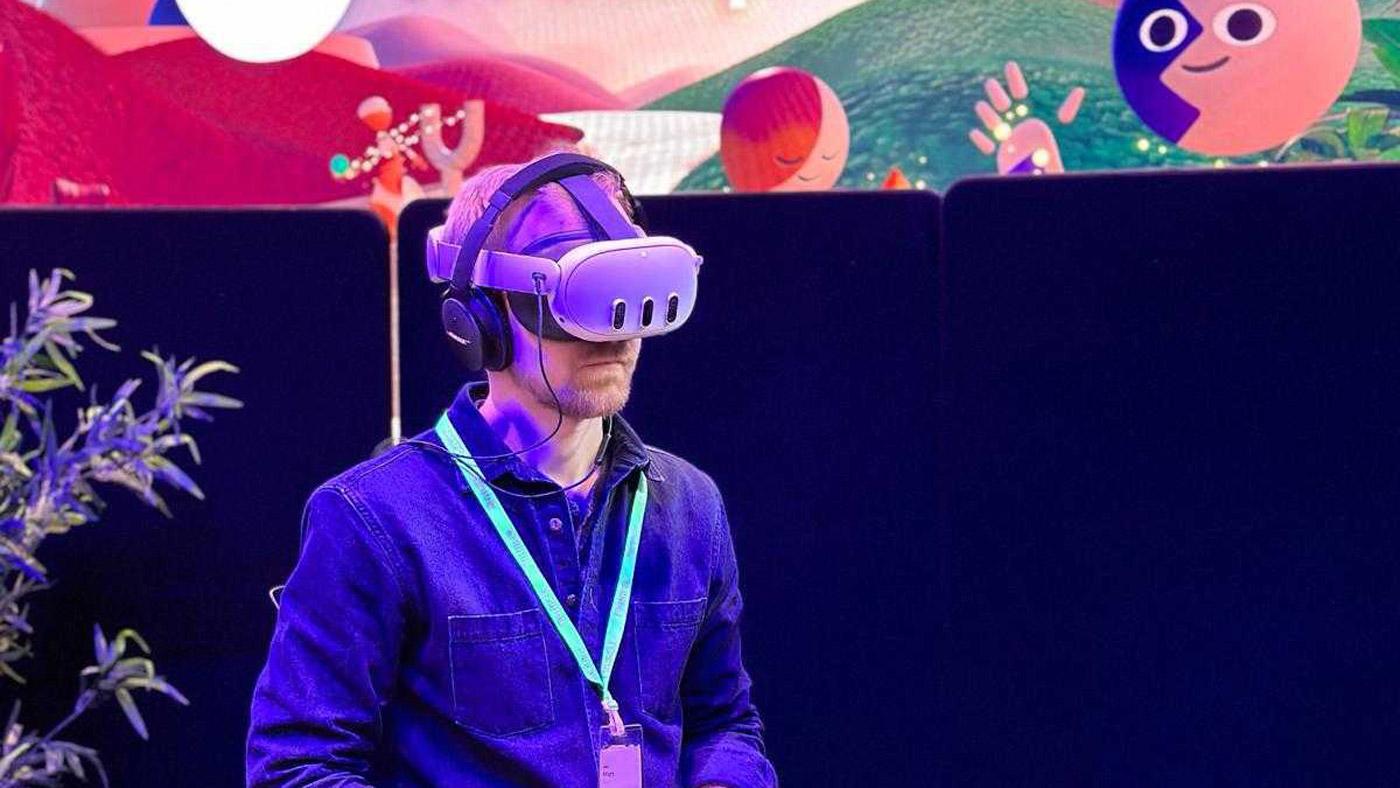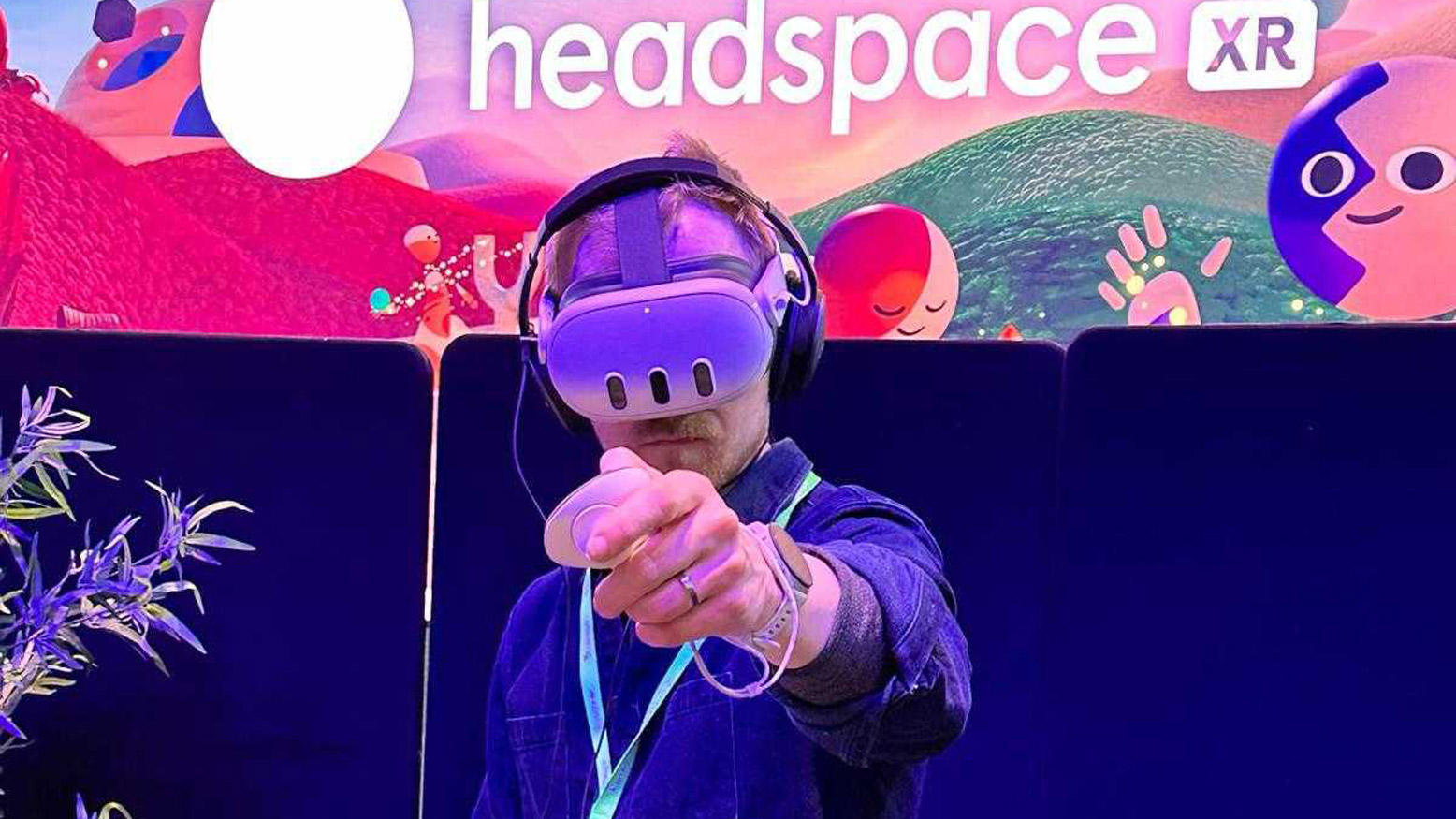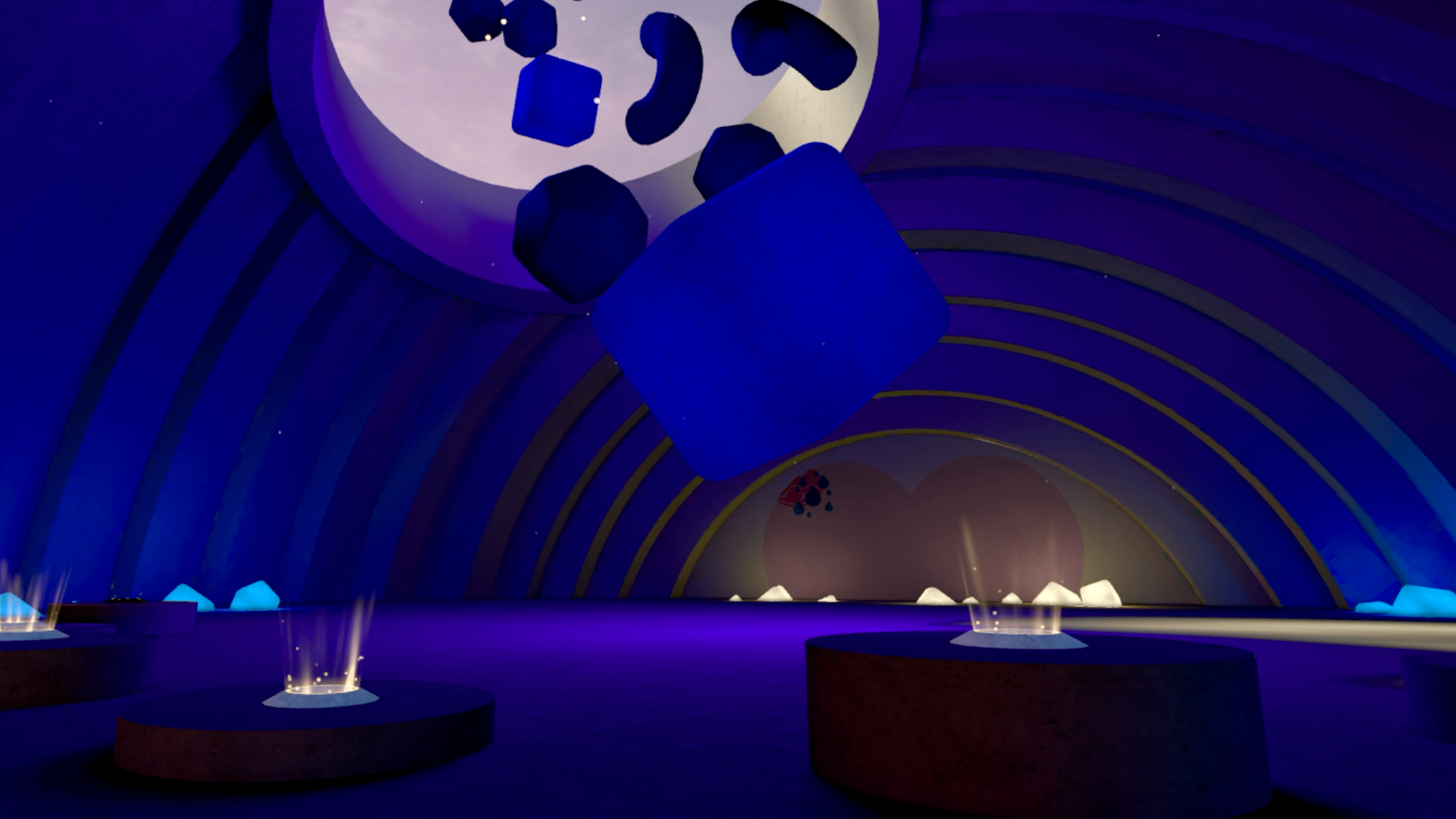
I’m trying to breathe slowly, relaxing my shoulders and following the visual cues inside a pastel-colored world bathed in an orange sunset. It was almost easy to forget I was being watched carefully by several Meta and Headspace representatives, like a sort of laboratory experiment.
Trying to act natural and relaxed, while being watched and analyzed by unseen observers? My mind forgot to be quiet for a moment, instead conjuring up the image of myself in a police interrogation room, and I tried to suppress a snort.
Meditation app Headspace, one of the best fitness and wellness apps, has revealed Headspace XR, an “immersive playground” VR game with single-player and multiplayer modes based on the meditation principles you can find in-app. And we got to visit Meta headquarters to try it out, ahead of launch.
Headspace XR, developed with Meta and Nexus Studios for the Meta Quest 2, 3 and Meta Quest Pro headsets (some of the best VR headsets), is billed as an experience in which “users can move, play, meditate, or just explore with their friends”. The game itself is set in a central hub world with 13 areas to explore, each one corresponding to a different exercise designed to promote creativity, mindfulness, and positive thinking.
The game costs $29.99 in the US, and £22.99 in the UK, and is available from the Meta Quest store right now. At the time of writing – it was released today - we got an exclusive preview at London’s Meta HQ.
“We started with purpose,” Deborah Casswell, executive creative director of Nexus Studios, told TechRadar. “We knew the Gen Z audience we’ve been building this for are struggling with their mental health. Headspace has always done a brilliant job of meeting people where they are, so this offered an opportunity to come and reach a whole load of people who are already on the Quest platform.
“In terms of designing it for VR, we took all the good stuff, like social motivation, and approached it from the point of view of spending time with friends, and a lot of their identity is built around their friendships. We’ve created a positive place where they can go together to feel better, encourage conversation around mental health, and take part in experiences that can help.”
Trying the game

I am a casual on-off mindfulness app user. I have used Headspace’s mobile app in the past, and I’ve written elsewhere about my subscription to Calm. I have some experience with mindfulness principles, and the way platforms like Headspace gamify and implement them through mobile apps. I’ve also used VR in the past, although I’m hardly a power user these days.
I strapped on the headset, fired up the game, and found myself in a neutral shape-based environment awash with soothing tonal pastel colors: blues, pinks, and yellows, mostly. At the center was a tower comprised of various polyhedrons, stretching above the clouds (I was later told by a Headspace rep, who I met in the VR space, that each of these represented a level you could ascend to) and you could literally get your head above the clouds with practice. A nice, if obvious metaphor.
The sky itself was brilliantly rendered, and I enjoyed how interactive the environment was: you could spend ages throwing colored bubbles (or “flow bursts”) at the walls and coloring them with a satisfying splat, or pressing your hand into the wall to slowly increase the spread of color.

With a little guidance, I got to go about leaving my stamp on this lobby environment and try a couple of games. One was a task in which you waved your hands or controller (I used controllers) to send energy balls around a room, moving them around with tai-chi-like motions to collect floating points. The result was a bit like water bending in Avatar, the Last Airbender, using deliberate, soothing movements. The game was very responsive, and it did scratch that itch in my brain. I enjoyed it and felt as calm as I thought it was possible to be with an unfamiliar X-Men-style visor strapped to my face and being stared at by Meta and Headspace staff.
I also tried box breathing, a guided breathing exercise I had done via the app in the past. I breathed in for a four-count, held for four, exhaled for four, and held at the “bottom” of my breath for four again. The VR headset allows for visual cues rather than the audio-only cues I’d used before, with completed boxes disappearing into a sunset sky. All very clever stuff.
“Play is an incredible wellness tool. You’re rarely more mindful than when you’re playing. So using the Meta Quest platform, we have all these gaming tools at our disposal for these wellness experiences. What we focused on was helping you focus on one thing at a time.” The last time I used a VR headset, I was constantly checking the periphery of my vision for enemy snipers: this new use of immersion is a refreshing change of pace.
VR mindfulness: Can it ever really be viable?

When I tried Headspace XR, I thought it was a fun way to apply meditation principles to a video game context. It was entertaining and informative, and I think it was a good way to demonstrate simple techniques and principles, like the power of play and specific breathing exercises, that can become tools to use when you need a little positivity. That’s often how meditation apps operate, and I think Headspace XR will do an even more effective job at helping bring the user into a meditative state with the aid of VR’s natural immersiveness.
However, Headspace and Nexus Studios seem intent on making the VR experience a virtual space to relax in, turning mindfulness into a social activity for Gen Z (not my words: Casswell placed a bit of emphasis on designing the game with Gen Z in mind). Although there was a big boom in these kinds of cozy shared experiences during the pandemic - I’m thinking of Animal Crossing on the Switch - there are a few barriers to this. For one, each friend needs to own a Meta Quest headset and a copy of the game, and at $30 / £23 for just the game, it’s not cheap.
As a shared gaming experience, Headspace XR falls short: there’s joy in play, free from the shackles of reaction time, strategy, or structure, but most groups of friends will begin craving a meatier, more satisfying shared experience. The gorgeously-rendered, pastel-hued environment is nice, but in their mission to create a safe, unchallenging, judgment-free safe space, it’s all just ended up a bit… bland. I know Headspace plans to reduce the damage done by over-stimulation, but as a game, I worry it has gone too far the other way.
As a solo gaming experience, Headspace is without challenge by design, which is pleasant for a while - but will it keep Meta Quest users coming back? I’m not convinced of the replay value of the mini-games. It’s all well and good doing short 10-minute (or even 20-minute) meditation sessions on an app, many of which can get repetitive, but having to log onto the game and don the headset puts an extra barrier in front of using the game to develop a meditation habit.
I did enjoy the experience, and as a casual mindfulness practitioner I do keep coming back to the apps, but I don’t see myself donning a headset for a passive-play experience with my friends. Maybe I’m just stuck in my millennial ways, and younger readers will feel differently.







